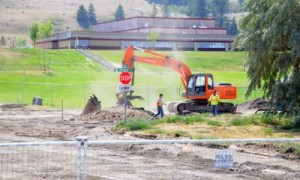B.C. Real Estate Association’s Fall 2009 Housing Forecast For The Kamloops Real Estate Market
The B.C. Real Estate Association recently released their 2009 Fall Housing Forecast. I have included the info specific to Kamloops below. You can also view the full PDF at the bottom of the page.
The Kamloops housing market is exhibiting balanced conditions and stable home prices, with buyers and sellers on equal footing. MLS® residential sales in Kamloops are estimated to decline 2 per cent this year to 2,200 units. However, an increasingly diversified local economy has lessened the impact of the recession and will contribute to a double digit rebound in home sales next year.
While an increase in home sales to end users has been evident of the past several months, recreation buyers have yet to come back into the market in significant force. Recreation buyers typically lag improved market conditions and are expected to increase their buying activity in 2010. MLS® residential sales are forecast to rise 18 per cent to 2,600 units in 2010. From a historical perspective, homes sales in 2010 will post a similar level to that recorded in the 2003-2004 period. Despite the financial crisis and a global recession, the average MLS® residential price in Kamloops is estimated to be down 2 per cent on an annual basis from a record $307,369 in 2008.
In contrast to the last 18 months, home prices in Kamloops are expected to be relatively stable in 2010, albeit forecast to climb 2 per cent to $308,000 as an annual average. Larger price appreciation in 2010 is less likely as improvement in the economy will be offset by expected increases in mortgage interest rates during the latter half of the year.
After declining 24 per cent in 2008, housing starts in the Kamloops CA are estimated to fall an additional 28 per cent to 415 units this year. A slowdown in the expansion of the housing stock helps support home prices in both the new and resale housing markets. However, lower inventory levels and stronger consumer demand is expected to induce increased new construction activity in 2010. A total of 545 housing starts are forecast for the Kamloops CA next year, with the largest increase occurring in single detached construction.
To view the full report click here: BCREA Fall 2009 Housing Forecast

